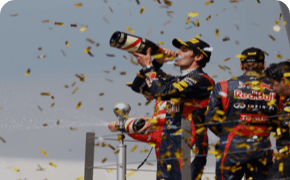According to Formula1.com’s technical illustrator Giorgio Piola, Ferrari are set to make a raft of changes to their car for 2016, including the introduction of pushrod front suspension, a shorter nose (which falls somewhere between what Mercedes and Toro Rosso used in 2015), lower sidepods with a narrower ‘coke bottle’ rear end, and a narrower gearbox.
But the most important and radical innovations are in the layout of the Italian team’s power unit.
Ferrari have not held back over the winter, making modifications to almost every component - indeed only the MGU-H (2) remains in the same position as in 2015.
On the engine side, Ferrari will follow Mercedes' lead and adopt variable inlet trumpets (5) for the first time. This change, which will allow better tuning of the air/fuel mixture during combustion, is possible because the large intercooler (1, top drawing) used last year has been removed from the ‘V’ of the engine and replaced with two smaller intercooler elements (1, bottom drawing).
Between them, these elements (one of which will be situated on top of the fuel tank and the other on the left sidepod) will ensure that the engine has the cooling needed to maximise its extra power.
To ensure that they can use a very narrow gearbox - a potential advantage aerodynamically - Ferrari have moved the MGU-K (3) and placed it low down on left side of the engine (as it is in all other manufacturers’ units). The new oil tank (4) meanwhile is both lower and wider than before, offering a potential improvement to the car's centre of gravity, while the clutch (6) is no longer in the engine but inside the gearbox bellhousing.
Will these changes provide the silver bullet Ferrari are looking for? The answer to that remains to be seen, but in theory they won't just see an upswing in power unit performance, they'll see aerodynamic benefits too as the revised layout will also allow them to run much more aggressive packaging at the rear.
















